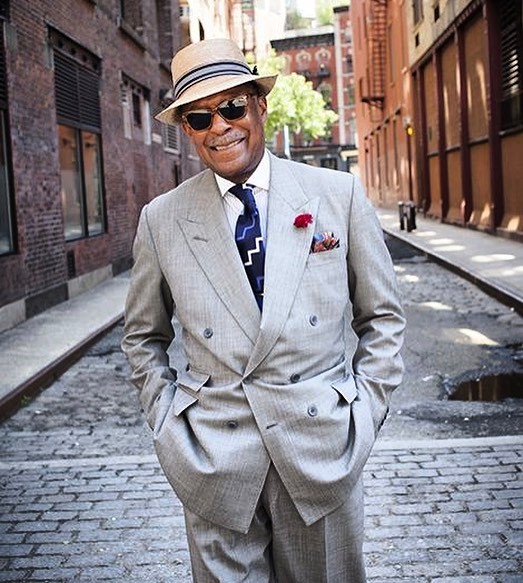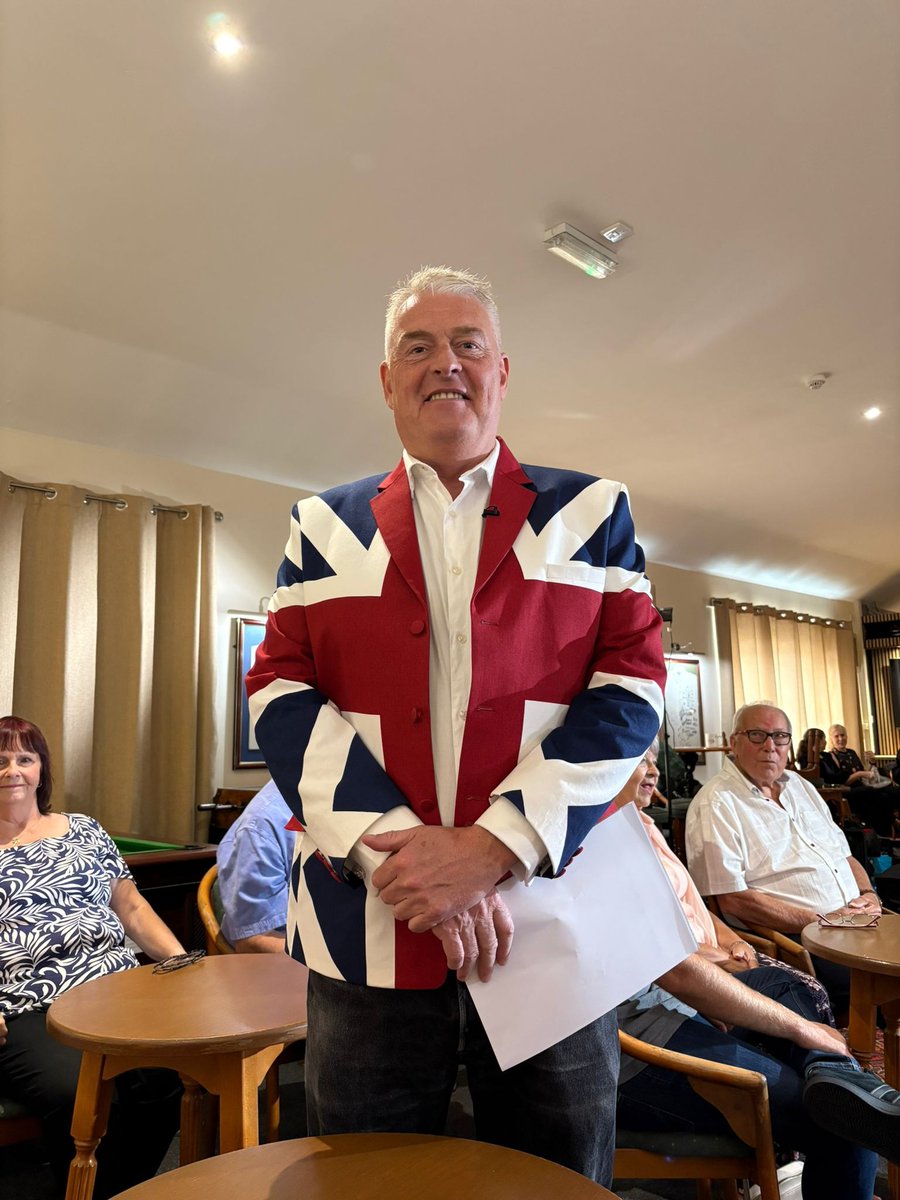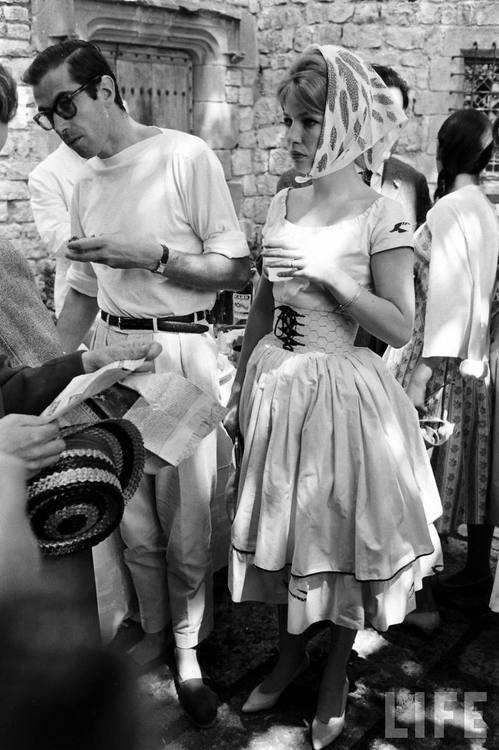This is a good opportunity to mention two people who I think are among the best-dressed men in the United States. At least in terms of wearing tailored clothing. 🧵
https://twitter.com/Kenasha/status/1852876922415689947
I agree with Kenasha that dress is cultural; what we deem as "good" is often about cultural language. If you don't find my examples compelling, there's of course no reason to consider my suggestions. But I disagree my advice leads to drab outfits.
I can think of two examples, both men who happen to be brothers. The first is Dr. André L. Churchwell, Professor of Medicine at Vanderbilt University; the second is Dr. Keith Churchwell, President of the American Heart Association. 



You can describe their style as classic, old fashioned, or dandy. But I don't think you can describe them as drab. They happen to be clients of one of the best tailors in the United States, Leonard Logsdail, who moved his business from Savile Row to Manhattan in 1991.
If you've never heard the name Logsdail, you've certainly seen his work. He made the suits for The Wolf of Wall Street, The Great Gatsby, Frost/ Nixon, and countless other films. Also Denzel Washington in American Gangster. Look at the shape and drape on this suit!!
So we know the Churchwells have a good tailor, but a tailor only makes your clothes, they don't dress you in the morning. If you understand the language of men's dress, you can spot a lot of sophistication in the way they combine things. 



There are three things to note. First, the tailoring is impeccable. The collar always hugs the neck; there's never any puckering or pulling. The silhouette is flattering and things hang cleanly. You can get away with a lot when the tailoring is on point. 



Second, the Churchwells know the difference between a suit and a sport coat. They don't randomly mix things; everything follows a kind of cultural language. This language was covered a little in an earlier thread, linked here:
https://x.com/dieworkwear/status/1852770383948353956
Finally, while their style is bold, it's not like they randomly threw a wild thing into an outfit. Instead, the whole outfit is considered in terms of color and style.
For instance, look at this outfit, which involves a baby blue tweed decorated with a box check.
For instance, look at this outfit, which involves a baby blue tweed decorated with a box check.

Since this is made from a slightly loosely woven tweed, we know it's a sport coat, not a suit jacket. Notice the combination of bold colors: baby blue jacket; purple tie; blonde tortoiseshell picking up orange stripe in tie; red carnation echoing hints of warmth in accessories. 



Here are two more sport coat outfits. How do we know these are sport coats? Jackets have brass buttons, making them blazers. Note how all the colors here are slightly warm (they have red or yellow undertones), making the outfits feel cheery. 



Let's move to a suit outfit. We know this is a suit bc the clothes are made from a grey flannel and the jacket has tonal (rather than contrast) buttons. Remember how I said grey sport coats can be hard to wear on their own unless they're obvs sport coats? This requires the pants. 



Here we see a pink seersucker suit. Slightly more casual fabrics like this can swing either way, so if Dr. Andre wanted, he could wear the jacket with something like tan chinos. Note how the fabric is more casual than grey flannel (and certainly slick worsteds worn for business) 







This one is entering real dandy territory: a purple flannel suit decorated with a box check. Outfit employs a lot of autumnal colors. This is again a more matte fabric and I suppose you could wear the jacket as a sport coat (although this is level 100 dressing). 







One thing you'll never find is Dr. Andre Churchwell wearing slick worsteds like this without their matching pants. Everything about these jackets—color, pattern, weave, fiber, finishing—screams business. So he needs the matching pants for the jacket. 



This is also true of his brother, Dr. Keith Churchwell. From the fabrics, can you guess whether the jackets shown here are suit jackets or sport coats? And what he would have paired with them? 



The navy chalkstripe is a suit jacket (navy, chalkstripe, flannel = city). The brown check is a sport coat (brown, checked, tweed = country). So we can reliably guess he wore navy chalkstripe pants with the first, and something like tan whipcords or grey trousers with the second
Here we see Dr. Keith Churhcwell wearing a red tartan jacket. The matte fabric and loud pattern distinguish this as an odd jacket, so he's paired it with trousers cut from a different cloth. 

Even when things look suity, such as this puppytooth jacket, the Churchwells employ details to make the jacket a bit more casual. The chest pocket here has an inverse pleat, a sporting detail that you'd never find on a business suit. This throws it into sport coat territory. 



I don't advise you experiment with details this way bc you can easily wind up with Frankenstein monster jackets. But the Churchwells are skilled dressers who are guided by a top end tailor. Point is, you can't mix and match willy nilly; you have to think about details & language 



There will be some who feel this level of dressing is maybe a bit too dandy for them, or perhaps so far beyond their reach or capabilities that it has little relevance. But plenty of other examples abound.
A tan corduroy sport coat can be easily worn with blue jeans because it's very obviously a sport coat and not a suit jacket. Similarly, a brown tweed can be worn with grey flannel trousers because it's obviously a sport coat. 



Something like this tan worsted wool (slick, smooth, very dressy) needs the accompanying pants. Grey jackets that hew too close to business fabrics also require their matching pants. 



Again, if you don't find my examples convincing, that's totally fine and reasonable. We simply have different aesthetics. But if you find my examples compelling, then I think it helps to learn about the language of dress and pay attention to texture, sheen, fiber, details, etc. 



One last thing: many of the photos of the Churchwell brothers in this thread were taken by Rose Callahan, who has two books about dandies. You can follow her on Instagram under the handle rcallahanphoto. Her books can be found on Amazon or your local bookstore. 



• • •
Missing some Tweet in this thread? You can try to
force a refresh

































